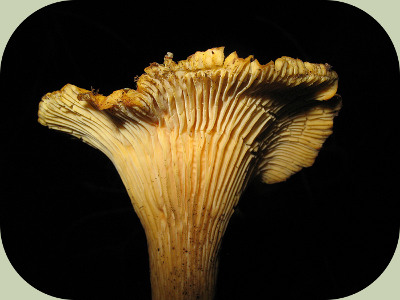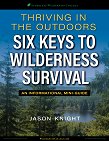Types of Mushrooms
for Medicine and Permaculture

There are several amazing types of mushrooms that are excellent choices as natural medicine, as well as species that can be cultivated as part of a permaculture food forest system (an approach to sustainable gardening based on ecological principles). Mushrooms are a rich source of both foods and medicines. Medicinal mushrooms have been shown to possess effective antibacterial, anti-inflammatory, antiviral and other healing properties.
Mushrooms have been used as effective medicine in a variety of cultures around the world. They continue to be a major part of traditional Chinese medicine traditions and they are gaining popularity in North America.
Types of Mushrooms for Medicine
There is a wide variety of medicinal mushrooms. Here is a short list of some of the best known and most utilized, along with their medicinal properties:
- Turkey tail (Trametes versicolor) – antibacterial, antioxidant, antitumor, antiviral, immune enhancer, kidney tonic, supports lungs & respiratory health
- Artist conk (Ganoderma applanatum) – antibacterial, anti-inflammatory, antitumor, supports lungs & respiratory health
- Ling chih (Ganoderma lucidum) – antibacterial, anti-candida, anti-inflammatory, antioxidant, antitumor, antiviral, promotes healthy blood pressure, blood sugar moderator, supports cardiovascular health, cholesterol reducer, immune enhancer, kidney tonic, liver tonic, supports lungs & respiratory health, nerve tonic, stress reducer
- Shiitake (Lentinula edodes) – edible, antibacterial, anti-candida, antitumor, antiviral, promotes healthy blood pressure, blood sugar moderator, cholesterol reducer, immune enhancer, kidney tonic, liver tonic, sexual potentiator, stress reducer
- Pearl oyster (Pleurotus ostreatus) – edible, antibacterial, antiviral, promotes healthy blood pressure, supports cardiovascular health, cholesterol reducer, nerve tonic
- Lion’s Mane (Hericium erinaceus) – edible, relieves stomach ailments, shows potential anti-dementia properties
- Enokitake (Flammulina velutipes) – edible, antitumor, immune enhancer
Mushrooms for Permaculture
An excellent use for many types of mushrooms is for companion planting. Many species provide a supportive, symbiotic role for vegetables and other plants, shrubs, and trees. Certain species can be planted with vegetables to form a mutually beneficial relationship that helps create a greater yield of vegetables, improves the soil quality, and produces a fruiting of edible mushrooms.
Some of the mushroom species that can be grown with vegetables include the garden giant (Strophoria rugoso annulata), elm oyster (Hypsizygus ulmarius), and pearl oyster (Pleurotus ostreatus). The garden giant does not fruit during the first year, but the elm oyster and pearl oyster do.
Recent research has also shown that some mushroom species can help remove toxins from soil and water. These new arenas of mushroom use are called myco-remediation and myco-filtration.
Be More Prepared For Your Next Outdoor Adventure!

Don't leave home without knowing these six essential survival skills. Our free survival mini guide reveals the strategies of:
- Shelter & fire to prevent the number one cause of death
- Obtaining clean water to avoid life-threatening dehydration
- Common wild survival foods and other critical skills!

Growing Medicinal Mushrooms
Medicinal mushrooms are wonderful, but oftentimes harvesting them from the wild can be challenging. Some species are not easy to find, while others are rare and wild-harvesting them can be damaging to the survival of that species. One way to avoid these potential problems is to grow them yourself. Some species are relatively easy to grow, and with a little bit of care and monitoring can give you a bountiful harvest for years to come. For information about obtaining and growing your own medicinal types of mushrooms, check out Fungi Perfecti in the links section below.
Further Resources
To learn about identifying, harvesting, and using wild mushrooms, consider attending the Wild Mushroom Identification Class.
To learn about sustainable living skills, consider our Permaculture Courses.
For information about purchasing different types of mushrooms to grow for medicine and companion planting, check out: Fungi Perfecti
By the way, when you're out foraging, it's important to know how to stay safe in the outdoors, especially if you were to get lost. Right now you can get a free copy of our mini survival guide here, where you'll discover six key strategies for outdoor emergencies, plus often-overlooked survival tips.
References: Stamets 2005. Arora 1979.

About the Author: Filip Tkaczyk is a periodic guest teacher at Alderleaf. He also wrote the field guide Tracks & Sign of Reptiles & Amphibians. Learn more about Filip Tkaczyk.
Return from Types of Mushrooms back to Wild Plants Articles
Is The Essential Wilderness Survival Skills Course Right for You? Take the "Online Survival Training Readiness" Quiz
See for yourself if this eye-opening course is a good fit for you. It takes just a few minutes! Get your Survival Training Readiness Score Now!

Grow Your Outdoor Skills! Get monthly updates on new wilderness skills, upcoming courses, and special opportunities. Join the free Alderleaf eNews and as a welcome gift you'll get a copy of our Mini Survival Guide.

 The Six Keys to Survival: Get a free copy of our survival mini-guide and monthly tips!
The Six Keys to Survival: Get a free copy of our survival mini-guide and monthly tips!
Learn more